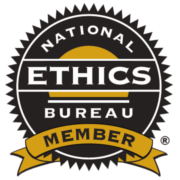Taxes in Retirement
When it comes to retirement planning, it’s only natural to be consumed with big picture items like finding the ideal community, whether to stay in your current home or downsize, and how much travel you’ll be able to do. And those are all great and very important things to think about. But a successful retirement often boils down to some of the more nitty-gritty details. And perhaps nothing is more nitty-gritty than having a strong tax strategy to see you through retirement.
Traditional IRAs and 401(k)s
Let’s first look at traditional IRAs and 401(k)s, which are tax-deferred retirement accounts that many Americans rely on during retirement. Money that you dedicate to these accounts typically slashes your current taxable income which thereby trims your tax tab in a given year. Savings, dividends, and investment gains in these accounts grows on a tax-deferred basis.
But those deferments don’t last forever. Once you’re officially retired and begin taking withdrawals, you’ll need to pay taxes on any gains and your pre-tax or deductible contributions. And it’s important to also bear in mind that these accounts have required minimum distributions, or RMDs, which is the point in time when you have to begin taking money out.
When do those RMDs kick in?
At present, RMDs begin at age 72 for a traditional 401(k) or IRA. If you work past your 72nd birthday you may qualify to delay an RMD from your employer’s 401(k) as long as you don’t own more than five percent of the company you work for.
Your withdrawals from your traditional 401(k) or IRA are taxed at your standard income tax rate.
Next, let’s look at Roth IRAs. First things first, they come with one significant long-term tax perk: While contributions to a Roth IRA aren’t tax deductible, your future withdrawals may not be taxed. But to enjoy those potentially tax-free withdrawals, you must have held your Roth IRA account for a minimum of five years. And while you can take out the amount you contributed at any time, tax-free, in most cases you must be at least 59 ½ to take withdrawals without a 10% early withdrawal penalty.
Social Security is yet another area where taxes are lurking after you retire. Until 1983, Social Security benefits were tax-free for every American, regardless of income. And while Social Security benefits still aren’t taxed for a sizeable chunk of the population, others are hit fairly hard. If you have provisional income, you may have to pony up federal income tax on as much as 85% of your benefits. To figure out your provisional income, begin with your adjusted gross income and then add 50% of your Social Security benefit and all of your tax-exempt interest. If your provisional income is less than $25,000 for individual filers or $32,000 for joint filers, you won’t have to pay taxes on your Social Security. However, if your provisional income falls between $25,000 and $34,000 for individual filers or $32,000 and $44,000 for joint filers, then as much as 50% of your benefit is subject to taxation. Finally, if your provisional income is north of $34,000 for individual filers and $44,000 for joint filers, then as much as a whopping 85% of your benefit is considered taxable.
What about pensions? The majority of pensions are funded using pre-tax dollars, which means the full value of your pension income would become taxable once you receive the money. Payments from both private and government pensions are generally taxable at your ordinary income tax rate. This is for informational use only and not to be considered advice. Please see a qualified tax professional.
SOURCE
https://www.kiplinger.com/retirement/602231/how-10-types-of-retirement-income-get-taxed

